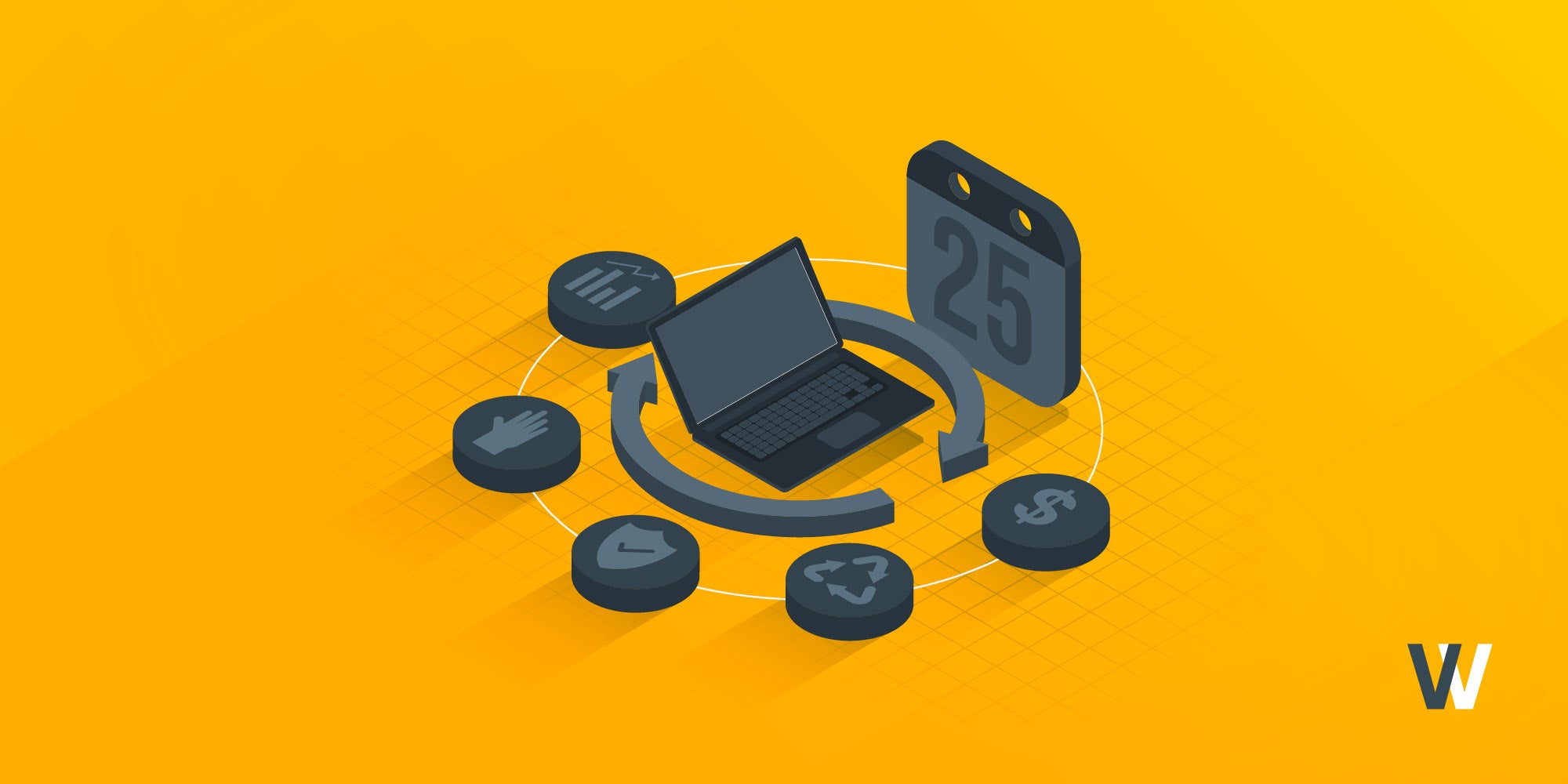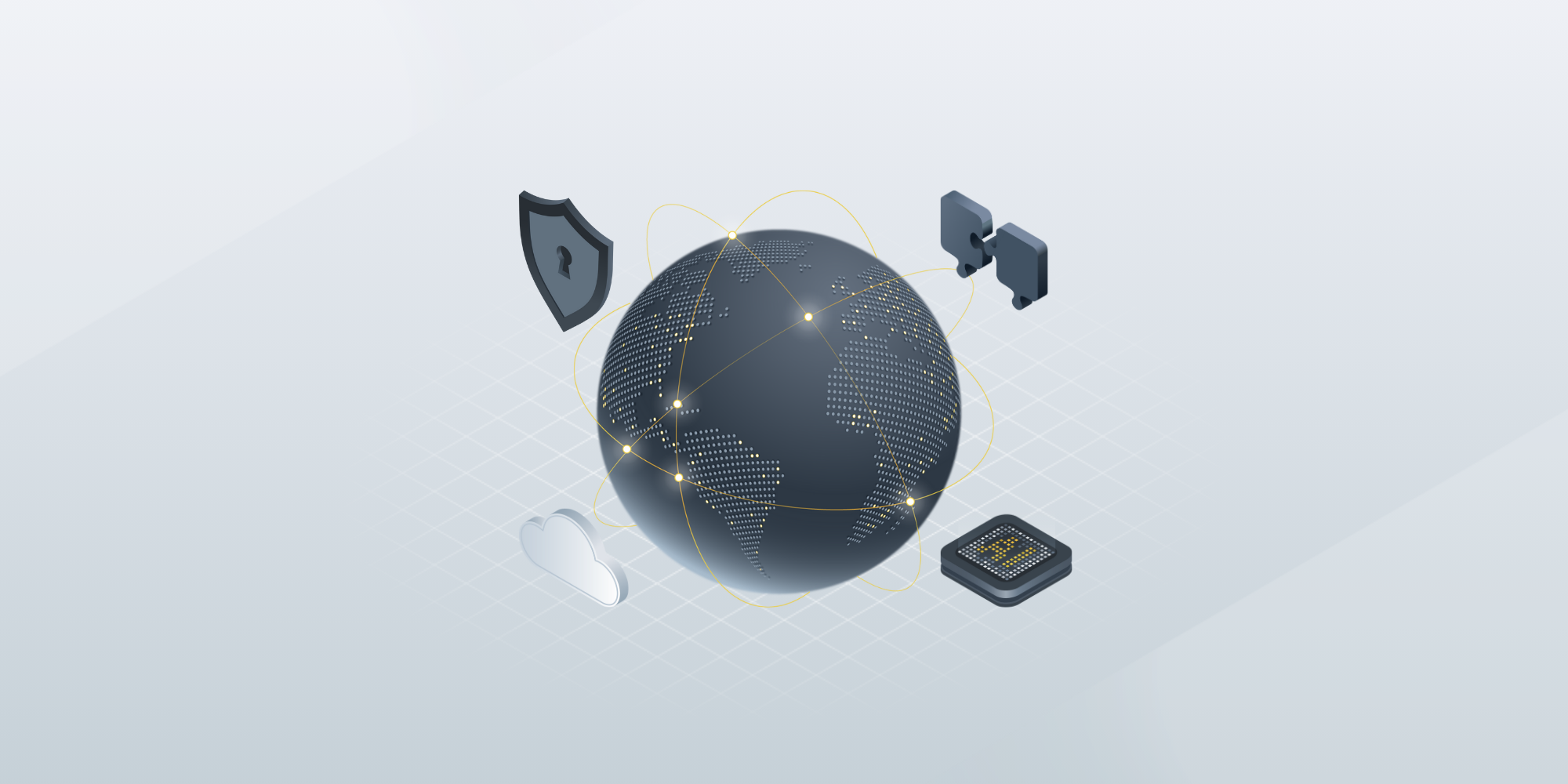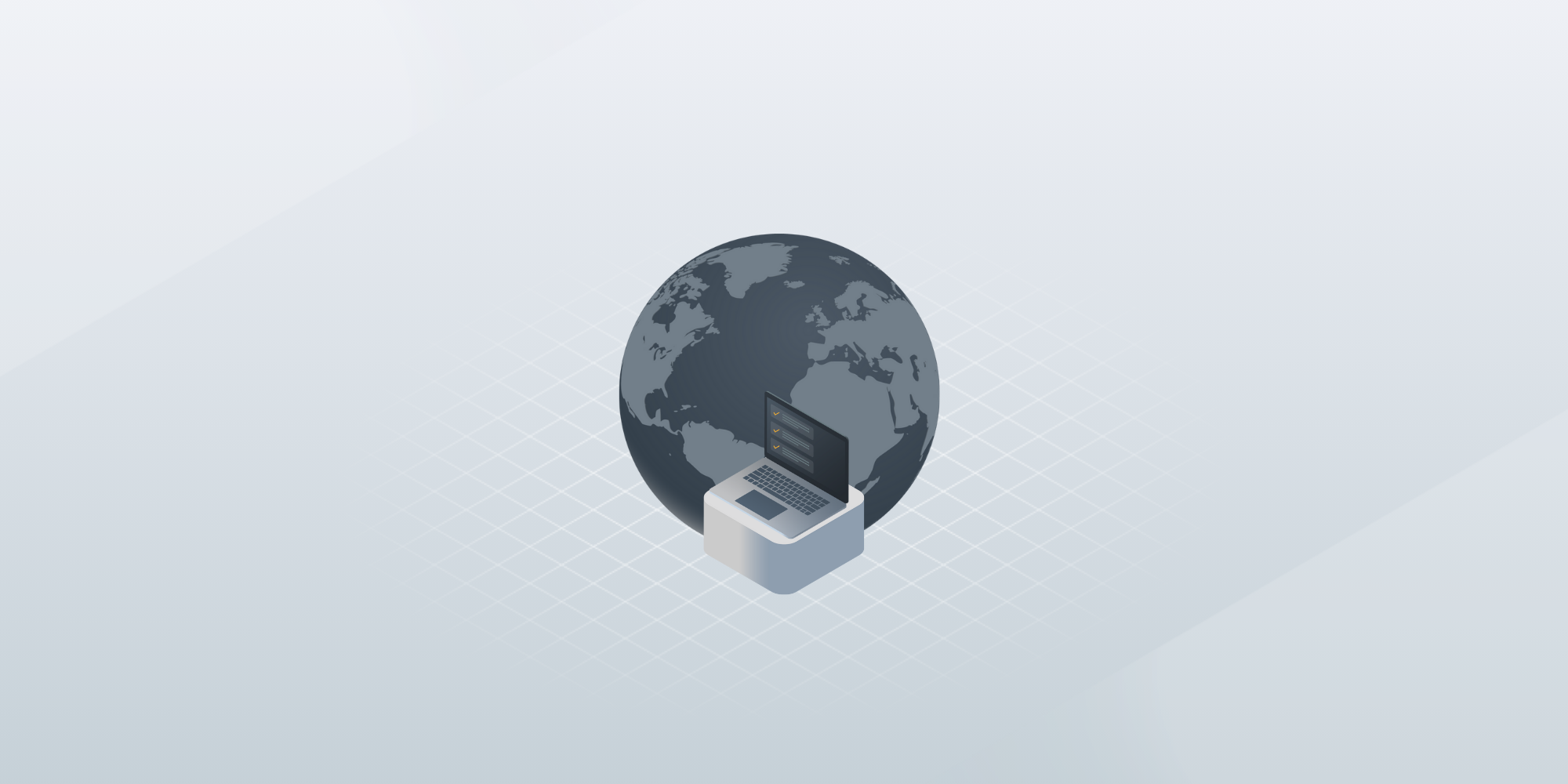The Best Asset Management Solutions to Watch in 2025
 GroWrk Team
GroWrk Team
Managing IT assets effectively ensures operational efficiency, maintains compliance, and optimizes resource utilization. As organizations grow, the challenges of IT asset management, especially for distributed teams, demand sophisticated solutions beyond mere tracking and reporting. This article explores the Top 10 IT Asset Management Tools for 2025, highlighting the most innovative platforms designed to streamline asset lifecycles and improve decision-making.
Among these solutions, GroWrk stands out as a premier recommendation. With an AI-driven platform designed to automate every stage of the IT asset lifecycle, GroWrk empowers organizations to manage procurement, deployment, retrieval, and disposal seamlessly across 150+ countries. By addressing the complex needs of global IT teams, GroWrk simplifies asset management, supports compliance, and reduces operational costs. As you evaluate the tools that fit your organization’s needs, consider how GroWrk’s unique offerings can redefine your IT management strategy.
What are IT asset management tools?
IT asset management tools are technology solutions designed to help organizations manage, track, and optimize their assets throughout their entire lifecycle. This includes IT assets like hardware and software and other types of assets such as vehicles, equipment, and real estate. By providing a centralized platform for managing asset data, this software enables organizations to track asset usage, monitor performance, and ensure optimal utilization.
With asset management software, organizations can gain a comprehensive view of their hardware and software assets, allowing for better decision-making and resource allocation. This centralized approach helps reduce costs, improve asset performance, and enhance overall efficiency. By leveraging asset management software, businesses can streamline their operations and ensure their assets are used effectively.
Key features of an IT asset management solution
A comprehensive IT asset management solution should include the following key features:
-
Asset discovery and inventory management: Automatically discover and catalog all assets within the organization, ensuring a complete and accurate inventory.
-
Asset tracking and monitoring: Continuously track and monitor assets throughout their lifecycle, from acquisition to disposal.
-
Software license management and compliance: Manage software licenses, ensure compliance, and avoid costly violations.
-
Configuration management database (CMDB): Maintain a centralized database of configuration items and their relationships, supporting effective change management and incident resolution.
-
Asset lifecycle management: Manage the entire lifecycle of assets, from procurement to retirement, ensuring optimal utilization and performance.
-
Reporting and analytics: Generate detailed reports and analytics to gain insights into asset performance, usage, and costs.
-
Integration with IT service management (ITSM) and other systems: Seamlessly integrate with ITSM and other enterprise systems, enhancing overall efficiency and collaboration.
-
Mobile access and user-friendly interface: Provide mobile access and a user-friendly interface, enabling easy management and tracking of assets from anywhere.
These features enable organizations to manage their assets effectively, optimize their usage, and improve overall efficiency. By selecting an IT asset management solution with these key features, organizations can ensure that they have a comprehensive and effective asset management system in place.
The best IT asset management tools for 2024
.png?width=800&height=400&name=In-blog%20image%20template%20(8).png)
Effective IT asset management software manages, controls, and protects your IT infrastructure. These tools act as a central repository, consolidating all asset-related information for better visibility and management in an asset management process. The best IT asset management ensures that your resources are utilized efficiently.
Here’s a quick overview of the top IT asset management tools for 2024:
-
Best for global IT asset management: GroWrk
-
Best for AI automation: Atomicwork
-
Best for enterprise scalability: IBM Maximo
-
Best for comprehensive visibility: ServiceNow
-
Best for automated discovery: SolarWinds
-
Best for cloud-based tracking: Asset Panda
-
Best for compliance: ManageEngine Asset Explorer
-
Best for license optimization: Flexera
-
Best for Workflow integration: Jira Service Management
-
Best for IT service management: SysAid
-
Best for lifecycle management: Ivanti
Each tool offers unique strengths in automation, scalability, and management capabilities, making them integral to any organization’s IT strategy.
1. GroWrk - Best for global IT asset management
Price:
Transparent, Preemium model with monthly workstation fees with an a la carte pricing model available
Pros:
-
Unmatched global reach (150+ countries)
-
Comprehensive IT asset lifecycle management
-
Seamless integrations with customizable options
-
Transparent pricing without hidden fees
-
Advanced security and compliance features
Cons:
-
Requires initial setup for full platform utilization
Why GroWrk?
GroWrk stands out as the leading solution for managing IT assets globally. It provides a unified platform for procuring, deploying, retrieving, and disposing of IT equipment, enabling organizations to manage their inventory seamlessly. With advanced AI-driven support and robust security features like MDM software enrollment and identity management, GroWrk ensures compliance and efficiency at every step.
Its transparent pricing model, a la carte options, and unrivaled global logistics make GroWrk the ultimate solution for distributed teams. Customers consistently praise its intuitive interface, exceptional customer support, and advanced reporting tools for equipment usage and lifecycle management.
Rating:
-
Price: 9/10
-
Design: 9/10
-
Functionality: 10/10
-
Ease of Use: 10/10
2. Atomicwork - Best for AI automation
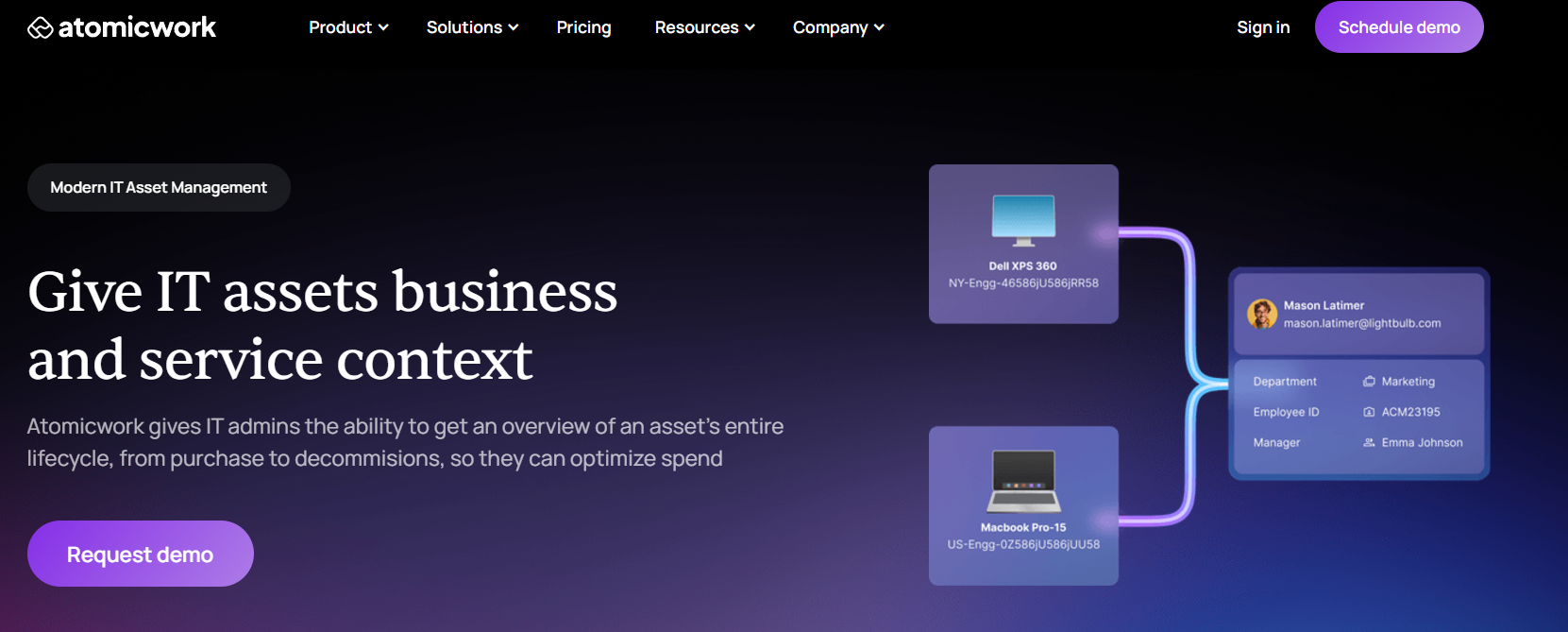
Price:
- Professional - For 500-1000 employees - $90/employee/year
- Business and Enterprise - For 1000-5000+ employees - custom pricing
Pros:
-
Leverages AI for automation
-
Comprehensive asset lifecycle management
-
Reduces repetitive tasks
Cons:
-
Can be complex to set up initially
-
Higher cost for advanced features
Atomicwork revolutionizes IT asset management with its advanced AI automation capabilities. It automates various processes, enhances efficiency, and seamlessly links requests and incidents.
IT teams can use Atomicwork to automate asset lifecycle management from purchase to disposal, reducing repetitive tasks and ensuring comprehensive management. Its standout feature is streamlining processes and minimizing manual efforts through automation.
However, this level of sophistication comes at a cost, and the initial setup can be complex. Despite these challenges, Atomicwork’s advanced features make it a top choice for organizations looking to harness the power of AI in their asset management practices.
Rating:
-
Price: 7/10
-
Design: 8/10
-
Functionality: 9/10
-
Ease of Use: 7/10
3. IBM Maximo - Best for enterprise scalability
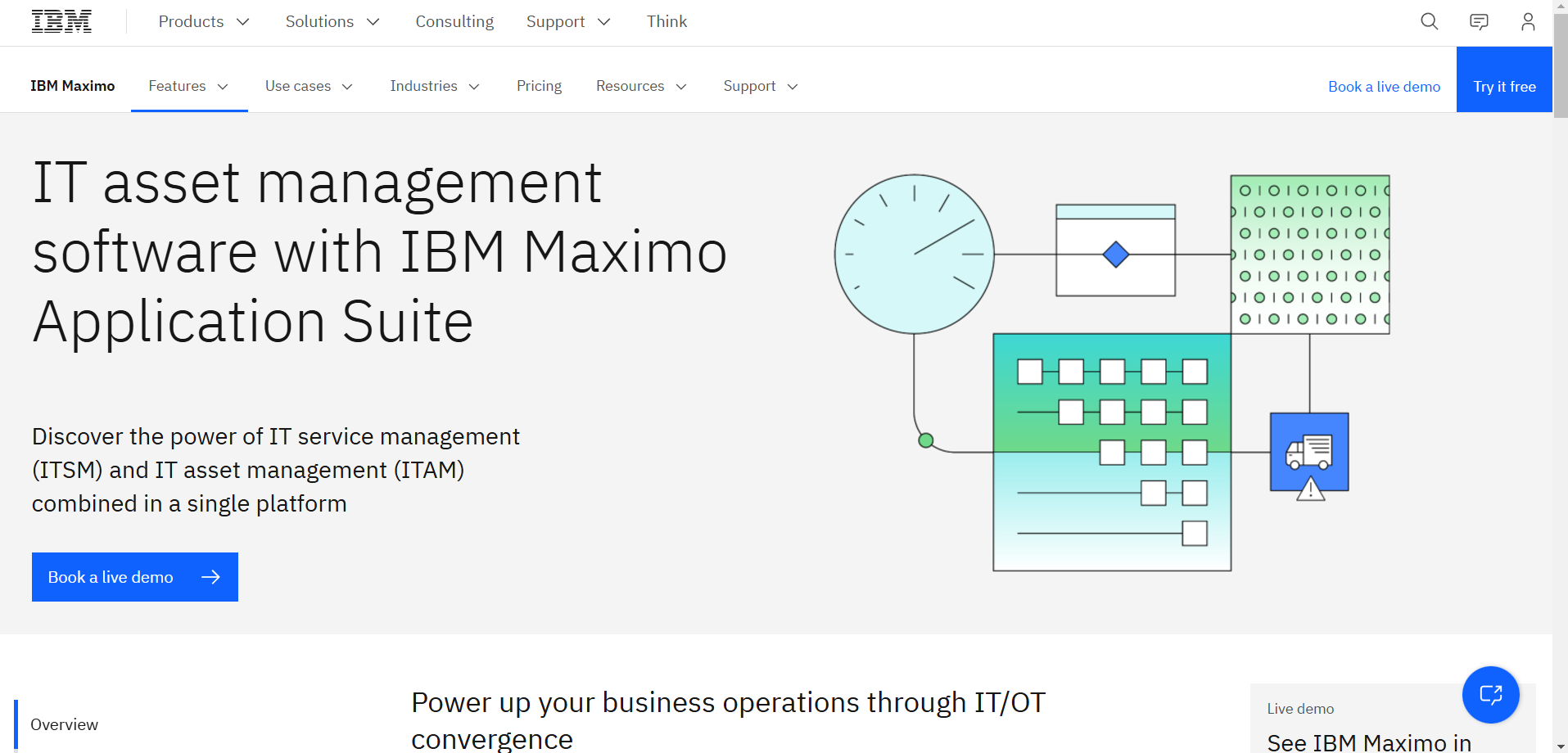
Price:
Varies based on enterprise requirements
Pros:
-
Extensive functionality and scalability
-
A high degree of customization
-
Ideal for large enterprises
Cons:
-
Requires significant investment
-
Steeper learning curve
IBM Maximo is ideal for large enterprises needing comprehensive asset management and scalability. Known for its extensive functionality, IBM Maximo adapts to growing asset portfolios and user needs, ensuring it can accommodate business growth and increasing assets without compromising performance. A well-defined asset management framework ensures that all assets are managed systematically and efficiently.
IBM Maximo stands out for its high degree of customization, allowing large organizations to tailor the tool to specific needs. However, this customization and functionality require significant investment and a steeper learning curve. Despite these challenges, IBM Maximo remains a top choice for enterprises seeking a robust and scalable asset management solution.
Rating:
-
Price: 6/10
-
Design: 8/10
-
Functionality: 9/10
-
Ease of Use: 6/10
4. ServiceNow - Best for comprehensive visibility

Price:
Varies based on subscription plan
Pros:
-
Comprehensive visibility into asset changes
-
Mobile access for remote management
-
Integrates with IT service management processes
Cons:
-
Can be expensive for small businesses
-
Requires training for optimal use
ServiceNow revolutionizes IT asset management with its advanced AI automation capabilities, making it a leader in asset management automation. It offers end-to-end asset visibility, facilitating informed decision-making and integrating asset data into IT service management processes. With ServiceNow, employees can manage assets and report incidents from anywhere, thanks to its mobile access features.
ServiceNow’s smart linking capabilities suggest related assets when incidents are reported, speeding up resolution times. However, these advanced features can be costly for smaller businesses. Despite this, ServiceNow’s comprehensive visibility and integration features make it a valuable tool for organizations looking to enhance their IT asset management.
Rating:
-
Price: 7/10
-
Design: 8/10
-
Functionality: 9/10
-
Ease of Use: 7/10
5. SolarWinds - Best for automated discovery
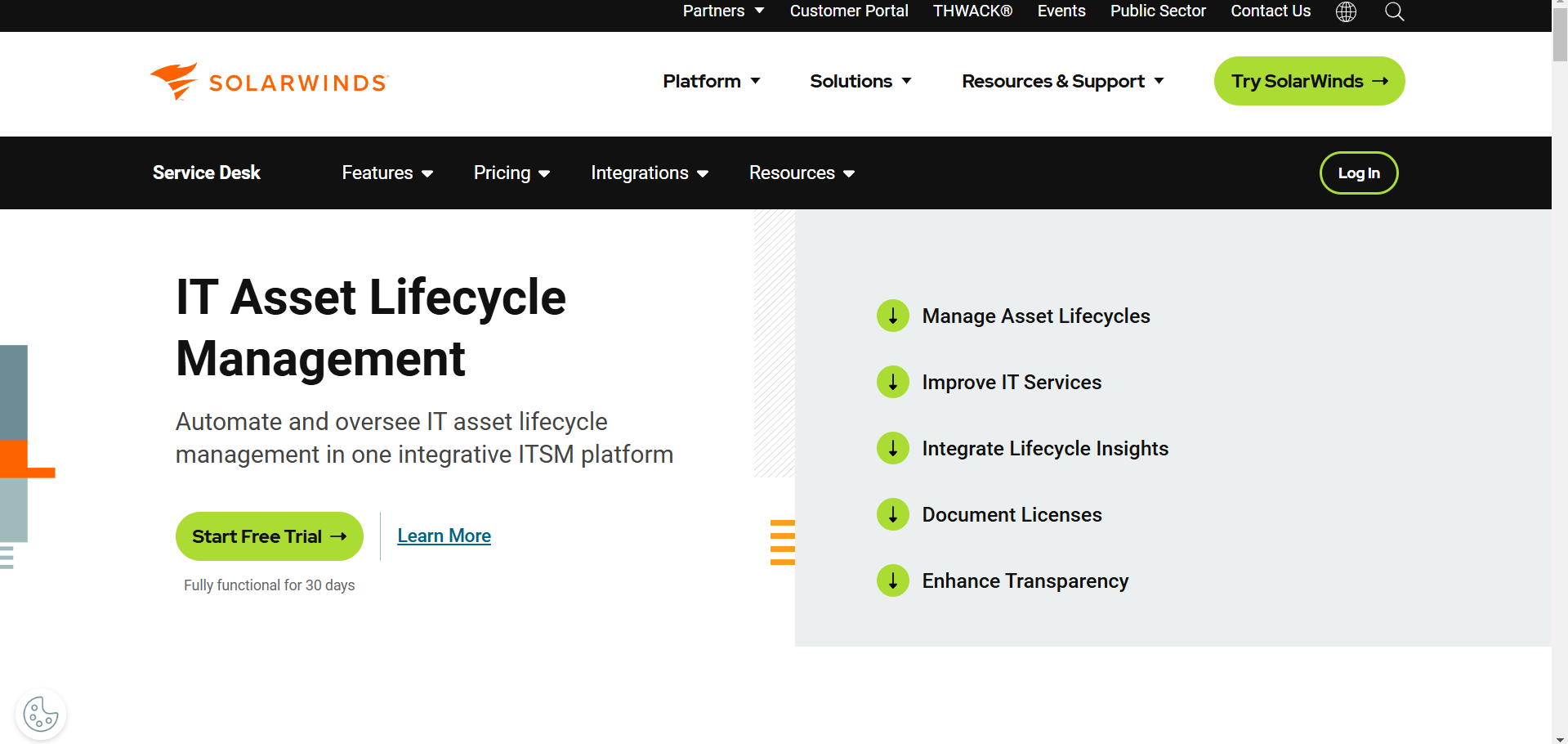
Price:
Varies based on subscription plan
Pros:
-
Automated asset discovery
-
Efficient cataloging of hardware and software assets
-
Comprehensive asset information
Cons:
-
Can be resource-intensive
-
Initial setup complexity
SolarWinds excels in automated asset discovery, enhancing visibility and management of technology resources. It automates the discovery process, efficiently cataloging all hardware and software assets within an organization’s IT environment. SolarWinds can detect a wide range of networked equipment by utilizing automated scanning tools and network monitoring, from servers to laptops.
SolarWinds stands out as a versatile asset management solution. It provides comprehensive information about installed software and critical assets and fosters proactive management. While it is initially resource-intensive and complex to set up, its automated discovery capabilities make it a standout choice for streamlining asset management processes.
Rating:
-
Price: 7/10
-
Design: 8/10
-
Functionality: 8/10
-
Ease of Use: 7/10
6. Asset Panda - Best for cloud-based tracking

Price:
Varies based on a subscription plan; set up a two-week trial with a product expert to see the platform in action.
Pros:
-
Cloud-based solution
-
Extensive integrations and logging capabilities
-
Built-in barcode scanning
Cons:
-
No user self-registration
-
Lacks certain advanced tracking functionalities
Asset Panda is a versatile, cloud-based asset management solution for small-to-medium-sized businesses. It includes extensive integrations, logging capabilities, and built-in barcode scanning, enhancing asset management efficiency. Asset Panda’s cloud-based nature allows for easy access and management of assets from anywhere, making it ideal for organizations with distributed teams.
ServiceNow’s smart linking capabilities suggest related assets when incidents are reported, making it a highly effective asset management platform. Despite its strengths, Asset Panda has some limitations, such as the absence of user self-registration and certain advanced tracking functionalities. Nevertheless, its cloud-based tracking and integration features make it a top choice for businesses looking to manage their assets efficiently.
Rating:
-
Price: 8/10
-
Design: 8/10
-
Functionality: 7/10
-
Ease of Use: 8/10
7. ManageEngine Asset Explorer - Best for compliance

Price:
Varies based on subscription plan
Pros:
-
Comprehensive asset lifecycle management
-
Effective software license compliance
-
Tracks software locations and renewal reminders
Cons:
-
Can be complex to configure
-
Limited advanced features
ManageEngine Asset Explorer is a robust IT asset management solution that covers the entire asset lifecycle. It allows organizations to manage various assets, including IT and non-IT assets, software, and asset components. A standout feature is its focus on software license compliance and software forecasting. ManageEngine Asset Explorer effectively tracks software licenses and facilitates compliance, helping organizations avoid costly violations from software audits.
SolarWinds provides comprehensive information about installed software and critical assets, fostering proactive management within an asset management system. While complex to configure and lacking some advanced features, its capabilities for managing software licensing compliance and asset history make it valuable for organizations prioritizing compliance. Its comprehensive asset lifecycle management and compliance features make it a top choice for businesses needing regulatory adherence.
Rating:
-
Price: 7/10
-
Design: 8/10
-
Functionality: 8/10
-
Ease of Use: 7/10
8. Flexera - Best for license optimization
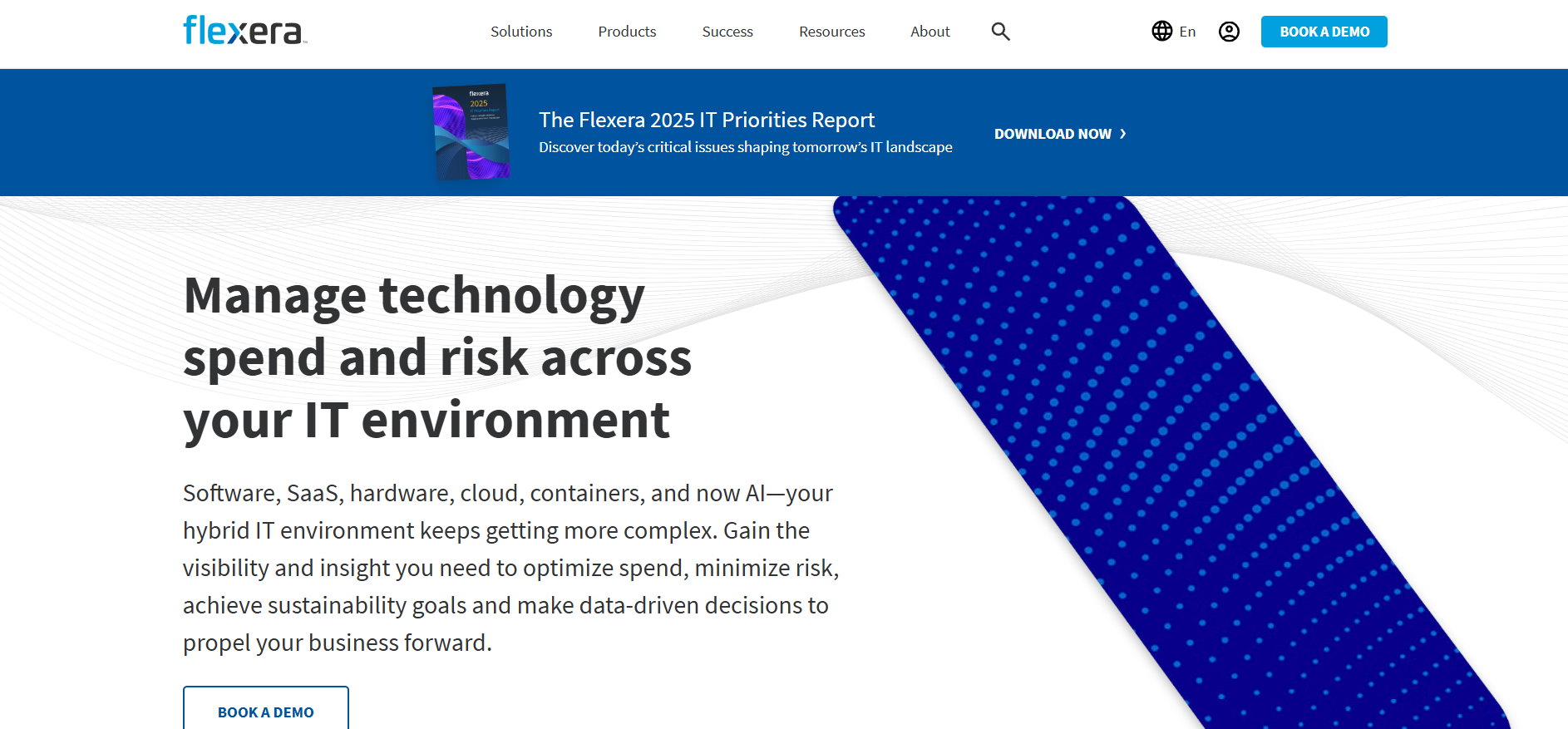
Price:
Varies based on subscription plan
Pros:
-
Optimizes software license usage
-
Ensures compliance
-
Tracks software license usage
Cons:
-
High cost for advanced features
-
Requires training for optimal use
Flexera optimizes software license usage and ensures compliance. Flexera’s FlexNet Manager Suite discovers and manages organization assets across locations, helping optimize costs by identifying underutilized licenses.
Asset Panda is a versatile, cloud-based asset management software solution for small- to medium-sized businesses. While Flexera provides robust license optimization capabilities, it costs more for advanced features and requires training for optimal use. Despite these challenges, Flexera’s ability to track software license usage and ensure compliance makes it valuable for optimizing software licensing and reducing costs.
Rating:
-
Price: 7/10
-
Design: 8/10
-
Functionality: 8/10
-
Ease of Use: 7/10
9. Jira Service Management - Best for Workflow integration
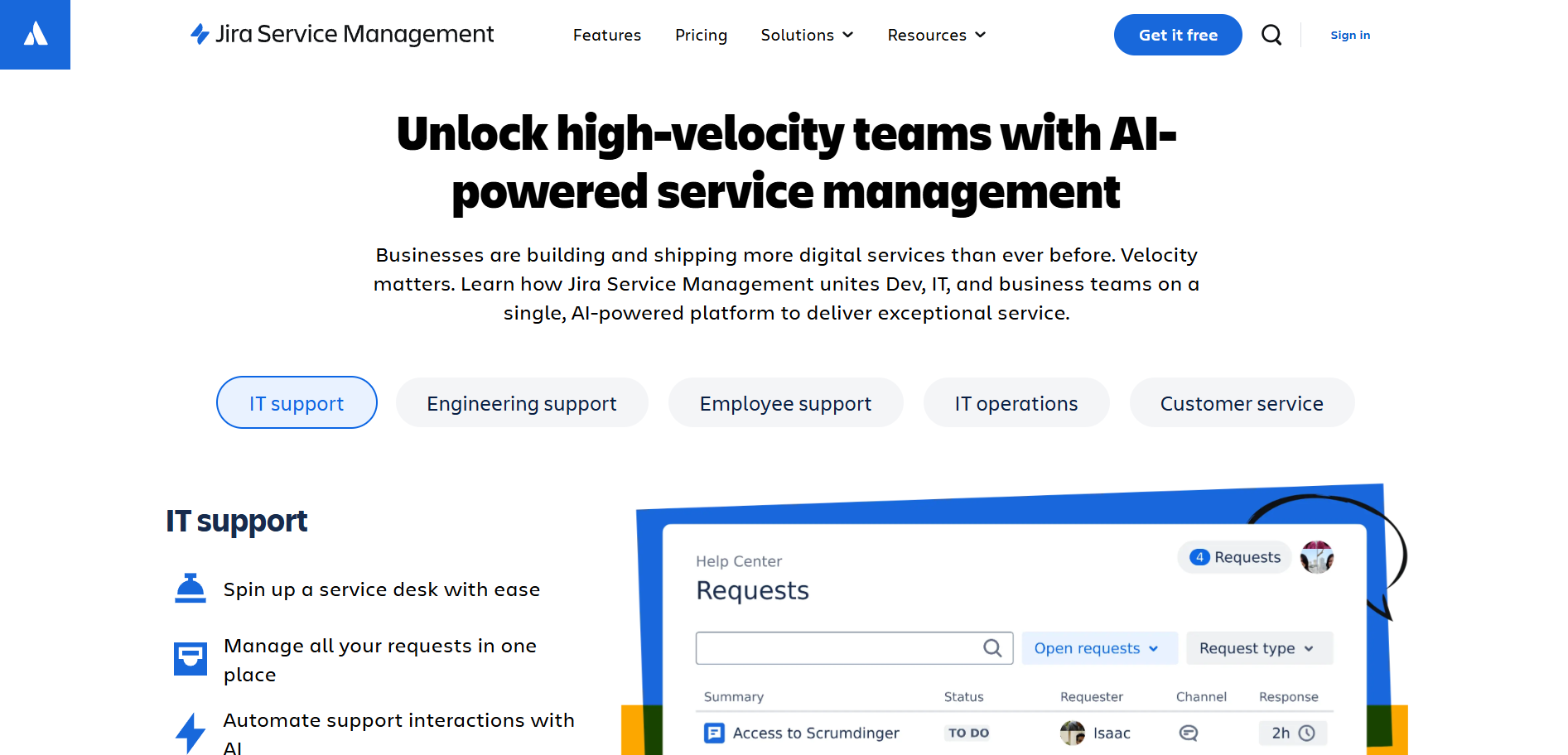
Price:
- Free forever for 3 agents
- $19.04 per agent/month (Standard)
- $47.82 per agent/month (Premium)
- Enterprise: customized quote
Pros:
-
Seamless integration with support tickets and change requests
-
Automation features for up-to-date asset information
-
Comprehensive asset tracking and inventory management
Cons:
-
Can be complex to integrate with existing systems
-
Higher cost for additional features
Jira Service Management integrates asset tracking and management with support tickets and change requests. It provides integration of asset tracking, inventory management, and procurement workflows. Automation features help maintain up-to-date asset information by integrating data from Jira issues. By using ManageEngine Asset Explorer, organizations can enhance their asset management practices and ensure compliance.
While integration with existing systems can be complex and additional features costly, Jira Service Management’s workflow integration capabilities make it valuable for streamlining business processes and improving problem management.
Rating:
-
Price: 7/10
-
Design: 8/10
-
Functionality: 8/10
-
Ease of Use: 7/10
10. SysAid - Best for IT service management

Price:
Varies based on subscription plan
Pros:
-
Comprehensive IT service management solution
-
Integration with IT operations
-
Part of a service desk solution
Cons:
-
Cannot track installed software
-
Limited to SMB market
SysAid is an IT service management solution with robust asset management features, ideal for small- to medium-sized businesses. It integrates asset management with IT operations for streamlined processes and offers asset management as part of its service desk solution.
However, the SysAid platform's limitation is its inability to track installed software. Despite this, SysAid’s comprehensive IT service management features make it a valuable tool for SMBs looking to integrate asset management with their IT operations within the asset management process.
Rating:
-
Price: 7/10
-
Design: 8/10
-
Functionality: 7/10
-
Ease of Use: 8/10
11. Ivanti - Best for lifecycle management
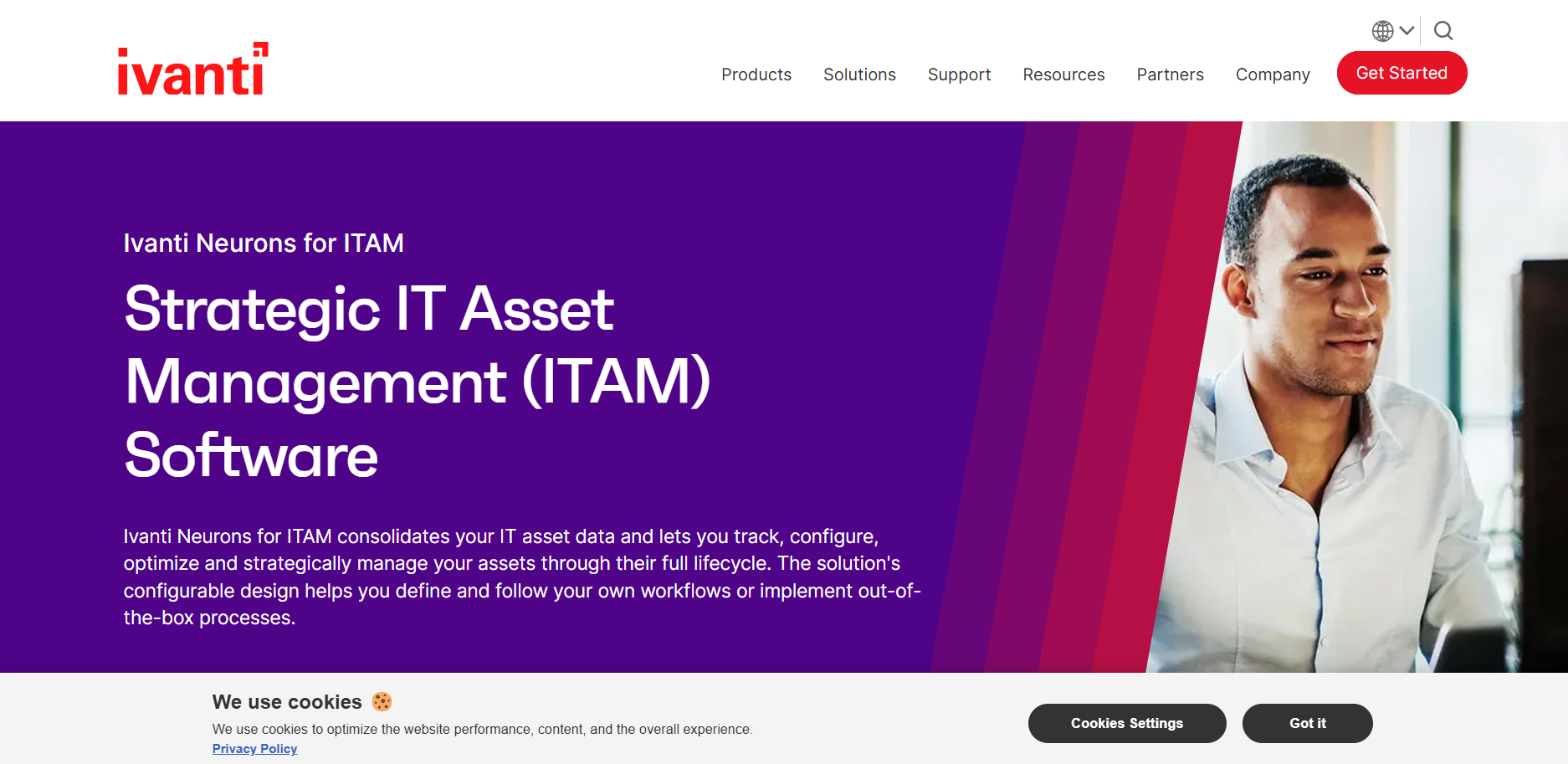
Price:
Varies based on subscription plan
Pros:
-
Comprehensive view of all asset types
-
Configurable design for custom workflows
-
Real-time visibility and instant detection of new devices
Cons:
-
High cost for advanced features
-
Steeper learning curve
Ivanti Neurons provides a complete view of software, hardware, servers, routers, and more throughout their lifecycle, making it ideal for lifecycle management. It manages various asset types, including software, hardware, client, server, virtual, and cloud assets.
Ivanti Neurons features a configurable design, allowing custom workflows to adapt to specific business needs. Its infographic-style dashboard provides intelligent visibility into the IT asset management landscape. Additionally, the platform includes a built-in process engine that streamlines onboarding, offboarding, procurement, and asset disposal processes.
While the platform comes with a higher cost and a steeper learning curve, its comprehensive lifecycle management capabilities make it a valuable tool for organizations looking to enhance their IT asset management practices using an asset management platform and a configuration management database. Jira Service Management’s integration capabilities make it a valuable asset management framework for streamlining business processes.
Rating:
-
Price: 7/10
-
Design: 8/10
-
Functionality: 9/10
-
Ease of Use: 7/10
12. BMC Helix Discovery - Best for comprehensive IT asset visibility
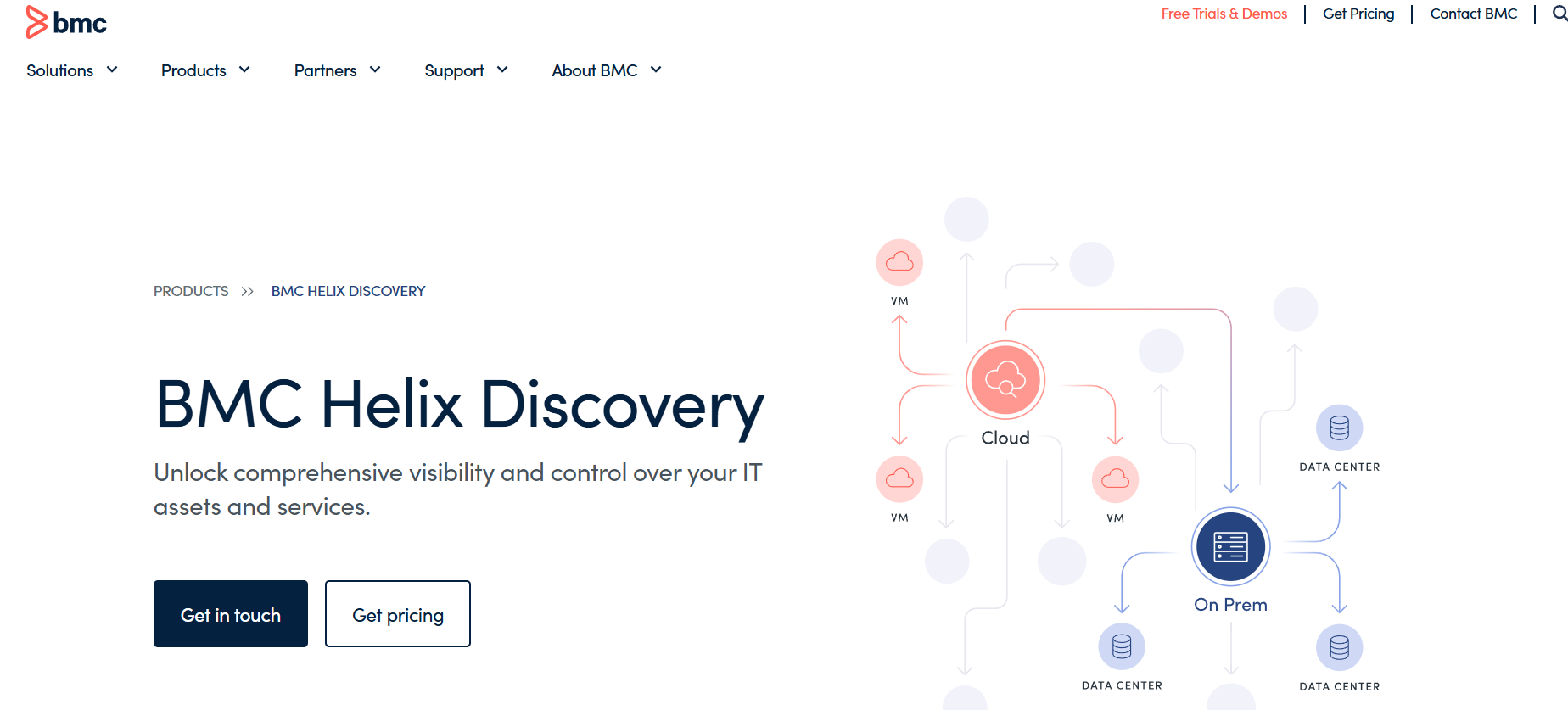
Price:
Varies based on subscription plan
Pros:
-
Uses AI to manage complex asset demands
-
Enables regulatory and security compliance monitoring
-
Provides end-to-end project asset lifecycle management
Cons:
-
Initial setup can be complex
-
Higher cost for advanced features
BMC Helix Discovery gives a comprehensive overview of both cloud and on-premise digital assets, helping organizations minimize risk by identifying vulnerabilities and tracking performance. The platform also delivers AIOps insights, offering contextual data about asset performance to enhance decision-making and operational efficiency.
BMC Helix Discovery is particularly valuable for organizations managing diverse digital assets. By leveraging AI capabilities, it simplifies the process of handling complex IT environments, ensuring compliance and efficient lifecycle management. While it may have a steep learning curve and higher costs for advanced capabilities, its comprehensive asset visibility and proactive management make it a top choice for enterprise IT teams.
Rating:
-
Price: 7/10
-
Design: 8/10
-
Functionality: 9/10
-
Ease of Use: 7/10
13. NinjaOne (previously NinjaRMM) - Best for automated asset discovery
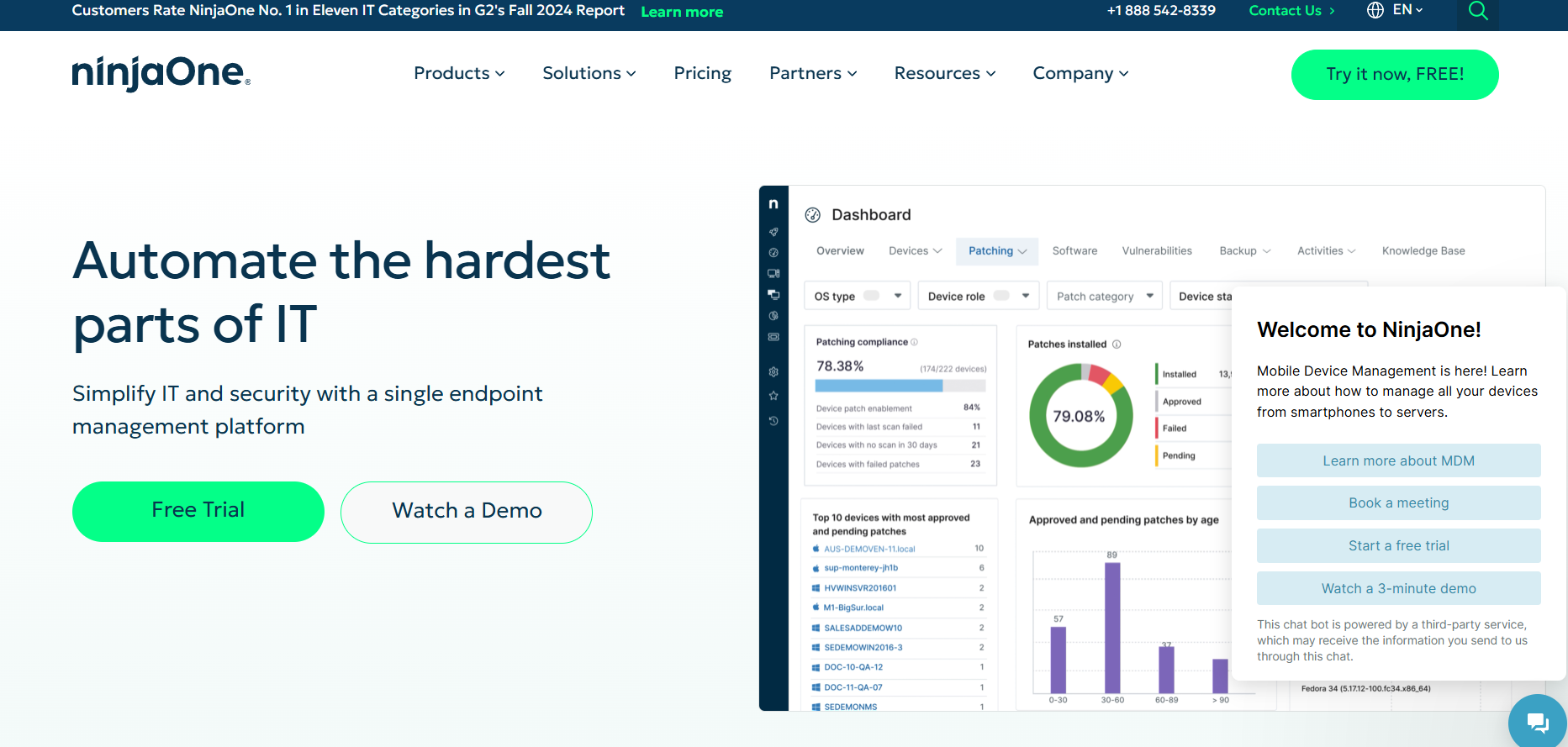
Price:
Varies based on subscription plan
Pros:
-
Automates IT asset discovery and management
-
Provides detailed software usage monitoring
-
Enables easy grouping, searching, and management of assets
Cons:
-
Lacks some advanced integration capabilities
-
Limited customization options
NinjaOne is a remote monitoring and management platform that includes robust asset management features for IT assets. The system collects data points on each asset, enabling automatic grouping and effortless retrieval. Its automation capabilities streamline IT asset discovery and management, saving time and reducing manual errors.
NinjaOne is particularly effective for organizations looking for an intuitive and easy-to-deploy solution. Its detailed reporting tools allow IT teams to monitor software usage and make informed decisions. While it may lack some advanced integration features, its focus on simplicity and automation makes it an excellent choice for small to mid-sized businesses.
Rating:
-
Price: 8/10
-
Design: 8/10
-
Functionality: 8/10
-
Ease of Use: 9/10
Benefits of IT Asset Management Software
Implementing IT asset management software offers numerous benefits to organizations, including:
-
Improved Asset Visibility and Control: Gain a clear view of all assets, their locations, and their statuses, enabling better management and control.
-
Enhanced Asset Utilization and Optimization: Ensure that assets are used to their fullest potential, reducing waste and improving efficiency.
-
Reduced Costs and Improved Budgeting: By optimizing asset usage and reducing unnecessary expenditures, organizations can achieve significant cost savings and better budget management.
-
Improved Compliance and Risk Management: Ensure compliance with software licenses and regulatory requirements, reducing the risk of costly violations and penalties.
-
Enhanced IT Service Management and Support: Integrate asset management with IT service management processes, improving support and service delivery.
-
Better Decision-Making with Accurate Asset Data: Access to accurate and up-to-date asset data enables informed decision-making and strategic planning.
By implementing an IT asset management software solution, organizations can gain a better understanding of their assets, optimize their usage, and improve overall efficiency.
How to choose the right IT asset management tool
.png?width=600&height=300&name=In-blog%20image%20template%20(9).png)
Choosing the right IT asset management tool can be daunting, but understanding your organization’s specific needs is crucial. Identify which assets need tracking and the comprehensiveness of your asset management requirements. Efficient asset tracking ensures organizations can monitor assets throughout their lifecycle, enhancing overall operational efficiency. Developing a clear asset management strategy is essential for selecting the right tool that aligns with your organization’s needs.
Scalability and integration capabilities are key factors to consider. Ensure the tool can grow with your organization and integrate seamlessly with existing systems. Compliance features are also critical. The right tool should facilitate audit preparations and maintain accurate records to ensure software license compliance and avoid costly violations.
Cost is another essential consideration. The price of asset management solutions can vary based on the number of assets, subscription plans, and available discounts. Look for a tool that offers cost optimization, leading to more informed budget allocation and spending decisions.
Lastly, prioritize security. Robust security measures and data protection policies should be integral to the asset management tool. Efficiency is crucial in IT asset management, forming the foundation of a well-designed ITAM program. Align the tool with your business needs, compliance standards, budget, and long-term goals to effectively manage your IT assets and streamline operations.
Summary
Choosing the right IT asset management tool is essential for optimizing your organization’s IT operations and ensuring compliance. Each tool in our list—such as Atomicwork for AI automation and ServiceNow for comprehensive visibility—offers unique capabilities to address specific challenges. However, GroWrk’s all-in-one platform emerges as a standout recommendation for organizations managing global IT infrastructure.
GroWrk’s unmatched global coverage, intuitive integrations, and advanced security features set it apart in the crowded IT asset management landscape. By enabling IT managers to track assets, ensure compliance, and optimize costs across 150+ countries, GroWrk helps organizations stay ahead of operational challenges. Its transparent pricing and dedicated customer support make it an ideal choice for enterprises prioritizing efficiency and reliability.
As you plan your IT strategy for 2025, consider integrating GroWrk into your operations. With its proven track record and commitment to excellence, GroWrk offers a robust solution for managing your IT asset lifecycle, ensuring your teams remain productive and your IT infrastructure runs smoothly.
Frequently asked questions
What are the key factors when choosing an IT asset management tool?
When choosing an IT asset management tool, it is crucial to consider scalability, integration capabilities, compliance features, cost, and alignment with your asset management framework and business needs. Prioritizing these factors will ensure you select a solution that effectively supports your organization’s growth and operational efficiency.
Why is AI automation important in IT asset management?
AI automation is crucial in IT asset management as it significantly enhances efficiency by streamlining processes and reducing manual efforts through asset management automation. This leads to improved accuracy and productivity in managing IT assets.
How does IBM Maximo support large enterprises?
IBM Maximo supports large enterprises through its extensive functionality and scalability, making it a robust asset management solution for proactive maintenance and comprehensive asset management. This helps businesses optimize their operations and ensure efficient resource utilization.
What makes ServiceNow a valuable tool for IT asset management?
ServiceNow is valuable for IT asset management because it delivers comprehensive visibility into asset changes, integrates data into IT service management processes, and allows for mobile access, making it an effective asset management platform.
How can IT asset management tools help with software license compliance?
IT asset management tools, such as ManageEngine Asset Explorer, ensure software license compliance by tracking licenses and helping organizations avoid costly violations during audits. Consequently, implementing these tools significantly mitigates non-compliance risk and enhances asset management practices.


